Ten years ago, we couldn't have imagined how tools like machine learning, eDNA, and satellites would advance and transform conservation work. Now technology is advancing faster than ever, and as tools become smaller, lighter, and more affordable, it's vital to have a space where community members can discuss the next big thing, share ideas, compare tool options, and tell the story of their experiences - positive, negative, and anything in between - while using new technologies.
In 2021, the WILDLABS State of Conservation Tech report detailed what tools show the most promise according to community members, as well as what tools are currently seen as the most effective. And as new tools enter the field, we're excited to see how this data will change over time, and how this group grows over time as well.
Our State of Conservation Tech research also discusses something called the "Hype Cycle" - the pattern that occurs when a new technology bursts onto the scene, promises to be an exciting solution, encounters challenges as new users adopt the tool and put it into practice beyond just theory, and eventually settles into its most effective state as users acquire the right skills to use it to its actual potential. Machine learning, one of the most promising technologies, is currently in the middle of its own hype cycle, and we see community members working through their own hurdles to incorporate ML into their work effectively. Despite what you may think, this Hype Cycle can also be positive for tech development, as it means that users have big ideas for new tools, and with the right resources and skills, they can work toward bringing those ideas to life. And as our community members experiences the Hype Cycle for various tools at their own paces, we hope this group will also serve as a place to discuss that process and overcome hurdles together.
Ready to discover new possibilities? Join our Emerging Tech group now and get to know your forward-thinking conservation tech peers!
Header photo: Internet of Elephants
Sustainability Manager for CERES Tag LTD. An animal health company; animal monitoring, conservation, & anti-poaching/ rural crime. Wildlife, livestock, equine & companion. #CeresTrace #CeresWild #CeresRanch




- 2 Resources
- 19 Discussions
- 24 Groups
- @TaliaSpeaker
- | She/her
WILDLABS & World Wide Fund for Nature/ World Wildlife Fund (WWF)
I'm the WILDLABS Research Specialist at WWF-US

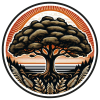

- 12 Resources
- 54 Discussions
- 24 Groups
- @serena.le
- | she/her
Conservation tech enthusiast
- 0 Resources
- 0 Discussions
- 9 Groups
- @StephODonnell
- | She / Her
WILDLABS & Fauna & Flora
I'm the Community Manager at WILDLABS



- 152 Resources
- 658 Discussions
- 30 Groups
- @Rosalia_Kaluki
- | She/Her
Passionate about conservation and Nature
- 0 Resources
- 0 Discussions
- 5 Groups
- @AnnabelL
- | she/her
- 0 Resources
- 0 Discussions
- 10 Groups
- 0 Resources
- 3 Discussions
- 11 Groups


- 0 Resources
- 18 Discussions
- 18 Groups
Petnerup
Animal tech startup founder
- 0 Resources
- 2 Discussions
- 9 Groups
- @sheavang
- | she/her/hers
Hello, my name is Shea Vang. I am a first generation Hmong woman professional interested in learning more about green/sustainable practices, clean tech, and carbon projects.
- 0 Resources
- 0 Discussions
- 4 Groups
- @NevilleCLS
- | He/Him
CLS (Collecte Localisation Satellites)
- 0 Resources
- 1 Discussions
- 14 Groups
- @Mumonkan
- | he / him
Wild Me
Software Engineer for Wildlife Conservation
- 0 Resources
- 4 Discussions
- 11 Groups
Article
An update on Ceres Tags products that are being used in conservation
22 August 2022
Careers
Job opening at ARISE, an innovative program in the Netherlands to build a digital infrastructure for biodiversity data and services
19 August 2022
Are you interested in joining a team dedicated to changing how conservation is conducted around the world by developing new genetic technologies for conservation, and being part of the new wave of scientists paving a...
15 August 2022
Are you creative, love new challenges and have experience developing software? The Wildlife Insights team is hiring! Join a diverse team of ecologists, data scientists, engineers and machine learning experts to protect...
10 August 2022
Careers
The San Diego Zoo Wildlife Alliance is seeking a new Research Associate to join their Conservation Technology Lab team.
29 July 2022
Article
Ceres Tag sends just in time alerts and GPS location to have the power to track and trace.
22 July 2022
The Earth Species Project (ESP) is a nonprofit organization dedicated to decoding animal communication and translating non-human language.
15 July 2022
“It’s such a massive leap forwards knowing where every rhino is every morning and every evening.” Fast Company writes about Smart Parks, a Netherlands-based organization with technological solutions against poaching.
14 July 2022
EPSRC and NERC have come together to collaboratively launch a new £3M call to fund proposals with a specific focus on the transformative potential of quantum sensing for environmental science.
14 July 2022
Careers
Love design, passionate about conversation? Want to make sure that technologies that are being developed actually meet the needs of the people who use them? Come and work for us!
13 July 2022
EarthRanger wants to support and expand your work. Apply by August 31!
23 June 2022
June 2024
event
April 2024
event
March 2024
event
| Description | Activity | Replies | Groups | Updated |
|---|---|---|---|---|
| Congratulations! My first hydromoth was just arrived yesterday and so excited! Looking forward for the update from your project!!! |
|
Acoustics, Biologging, Climate Change, Conservation Tech Training and Education, Data management and processing tools, Emerging Tech, Open Source Solutions, Protected Area Management Tools, Sensors, Software and Mobile Apps | 4 hours 11 minutes ago | |
| You can also do these things or feed it your own sources that it must not hallucinate from (and keeps confidential) if you have the paid-for version. |
+37
|
AI for Conservation, Emerging Tech | 1 week ago | |
| SYNTHETIC APERTURE RADAR WILL ALSO DETECT AND LOCATE CHAINSAWS, MOTORBIKES, BICYLCLES, FIREARMS, MACHETES in fact anything metal. I have been concentrating on trying to get... |
+10
|
AI for Conservation, Drones, Emerging Tech, Human-Wildlife Conflict, Wildlife Crime | 1 week ago | |
| Hey Sol, No problem at all. Depending on your configuration, the Audiomoth software would have to work on a PCB with an ESP32 chip which is the unit on the audiomoth/... |
|
Acoustics, AI for Conservation, Data management and processing tools, Emerging Tech, Sustainable Fishing Challenges | 1 week 3 days ago | |
| Gotcha, well I look forward to seeing future iterations and following along with your progress!! |
|
Autonomous Camera Traps for Insects, AI for Conservation, Emerging Tech, Open Source Solutions | 1 week 5 days ago | |
| 'Most importantly, we have to make it play a MIDI version of the DoctorWho theme song when you arm the device. That has to be the #1 feature if you ask me!' Seconded! |
+9
|
Acoustics, Biologging, Emerging Tech, Open Source Solutions, Sensors | 2 weeks 1 day ago | |
| Hi @Alasdair Great to hear from you! Thanks for the comment and for those very useful links (very interesting). And for letting @Rob_Appleby know. I can't wait to hear... |
|
Emerging Tech, Camera Traps, Conservation Tech Training and Education | 1 month ago | |
| Hello everyone, I'm interested in gathering insights on how the behavior of different species impacts the development and efficacy of... |
|
Biologging, Acoustics, Camera Traps, eDNA & Genomics, Emerging Tech, Marine Conservation | 1 month 1 week ago | |
| Hi @timbirdweather I've now got them up and running and winding how I can provide feedback on species ID to improve the accuracy over time. It would be really powerful to have a... |
|
Acoustics, AI for Conservation, Citizen Science, Emerging Tech | 1 month 2 weeks ago | |
| Thank you for the help! |
|
Biologging, Emerging Tech | 2 months 2 weeks ago | |
| Hi Danilo. you seem very passionate about this initiative which is a good start.It is an interesting coincidence that I am starting another project for the coral reefs in the... |
|
Acoustics, AI for Conservation, Biologging, Camera Traps, Citizen Science, Climate Change, Community Base, Connectivity, Drones, Emerging Tech, Human-Wildlife Conflict, Open Source Solutions, Sensors, Software and Mobile Apps, Wildlife Crime | 2 months 4 weeks ago | |
| Hi!I would take a look at Although developed for camera trap imagery, it is by no means restricted to such.Cheers,Lars |
|
Camera Traps, Community Base, Data management and processing tools, Drones, Emerging Tech, Remote Sensing & GIS, Software and Mobile Apps | 3 months 1 week ago |
Passionate engineer offering funding and tech solutions pro-bono.
23 January 2024 12:06pm
2 February 2024 1:22pm
Hi Danilo. you seem very passionate about this initiative which is a good start.
It is an interesting coincidence that I am starting another project for the coral reefs in the Philipines which also requires water analytics so I can probably work on both projects at the same time.
Let's that have a call and discuss, will send you a pm with my contact details
There is a tech glitch and I don't get email notifications from here.
Need advice - image management and tagging
12 January 2024 7:55pm
15 January 2024 8:47pm
Interesting, Iʻll give it a shot. Looks like this could save me some time.
Thanks for the explanation @wade!
24 January 2024 5:16pm
I have no familiarity with Lightroom, but the problem you describe seems like a pretty typical data storage and look up issue. This is the kind of problem that many software engineers deal with on a daily bases. In almost every circumstance this class of problem is solved using a database.
In fact, a potentially useful analysis is that the Lightroom database is not providing the feature set you need.
It seems likely that you are not looking for a software development project, and setting up you own DB would certainly require some effort, but if this is a serious issue for your work, you hope to scale your work up, or bring many other participants into your project, it might make sense to have an information system that better fits your needs.
There are many different databases out there optimized for different sorts of things. For this I might suggest taking a look at MongoDB with GridFS for a couple of reasons.
- It looks like you meta data is in JSON format. Many DBs are JSON compatible, but Mongo is JSON native. It is especially good at storing and retrieving JSON data. Its JSON search capabilities are excellent and easy to use. It looks like you could export your data directly from Lightroom into Mongo, so it might be pretty easy actually.
- Mongo with the GridFS package is an excellent repository for arbitrarily large image files.
- It is straightforward to make a Mongo database accessible via a website.
- They are open source (in a manner of speaking) and you can run it for free.
Disclaimer: I used to work for MongoDB. I don't anymore and I have no vested interest at all, but they make a great product that would really crush this whole class of problem.
25 January 2024 8:32am
Hi!
I would take a look at
Although developed for camera trap imagery, it is by no means restricted to such.
Cheers,
Lars
Ignite Labs: Space for Nature & Biodiversity Series
21 January 2024 2:46pm
New method for improving shape awareness in deep learning
11 January 2024 12:28am
Cutting edge plant conservation
9 January 2024 7:33am
9 January 2024 4:56pm
9 January 2024 7:10pm
Presentation opportunity: Text analysis for conservation (NACCB 2024)
8 January 2024 4:05pm
Apply to Beta test Instant Detect 2.0
11 May 2023 10:55am
21 December 2023 3:48am
Will you accept personal/hobbyist focused on conservation on their small plots of land (10-100 acres)?
I would, and know others, who would happily pay more than the official conservationists rate for the service, which could help to further subsidize the project. (Referring to your statement here: https://wildlabs.net/discussion/instant-detect-20-and-related-cost)
13th International Conference on Climate Informatics
18 December 2023 12:20pm
Call for Interview Subjects: Conservation Bioacoustics Methods
14 December 2023 8:47pm
15 December 2023 12:19pm
Happy to help Samuel, will send a message
15 December 2023 3:46pm
I'd love to!
16 December 2023 9:43am
Thank you Stefan! Will follow up with your email shortly.
Introducing the Inventory: The rise of the conservation tech wiki!
13 December 2023 5:51pm
Watch now - The State of Conservation Technology: 3 Year Trends
13 December 2023 5:25pm
Data Viz Inspo for the Holidays
11 December 2023 8:42pm
Autonomizing Small Mammal Traps
29 November 2023 6:26pm
1 December 2023 7:37pm
One thing to keep in mind is that researchers often want or at least would like to get certain metadata on the tagged animals like sex, size, weight, apperent fitness etc. Without these the questions you can ask can get rather limited. Also, it will also often be highly desired to take samples like blood, hair, other tissue e.g.
In addition, there can be cases where it may be better not to tag the animal if it is not the right age group, is too small to carry the tag, seems like it is not in a good shape etc.
I think it will take quite an effort to get automated systems (capture robots) to make these decisions to a degree you can trust.
Cheers,
Lars
9 December 2023 9:01pm
Thanks for the reply, Lars! I appreciate the input I am genuinely curious if there is a market for such a thing, all data is good data.
10 December 2023 2:30am
I always thought a tracker that attached like a slap bracelet would be sweet.
WILDLABS Awards 2024: Supporting accessible, affordable, and effective innovation for nature
1 December 2023 11:00am
Wishlist for kit in a field-based Research Station or tech testing space?
27 November 2023 10:41am
28 November 2023 3:25am
Regine Weckauf over on linkedin:
'Little to do with research and tech development, but given how hard it is to attract and retain experienced staff to field based positions, I know it makes a difference how nice the space is. Just because it's the "field", shouldn't mean staff living in basic conditions, regardless of how many times we've been told to see it as a badge of honor. If you have the money, put in nice bathrooms, kitchen, living spaces, and private accommodation. Maybe even a nursery? It creates more local employment opportunities and people genuinely want to visit.'
28 November 2023 2:25pm
Love the idea for in-house gear/supplies! It can be SOO difficult to travel with batteries, electronics parts with airline regs, country policies, etc. and shipping recorders/trail cams/etc. gets VERY (prohibitively) pricey in some countries with customs and taxes. Would be great to have an in-country place to source that kind of equipment.
Housing educational resources related to that tech (in the form of people, print materials, computer tutorials) in-house would be similarly awesome. Particularly/especially in local languages.
Having in-country wet labs as well helps the eDNA/genetics folks, since sample import/export permitting can be (always seems to be?!) a nightmare, so if you can even just do PCR and/or extractions in-country that helps a ton.
In terms of overall field-station-wishlist - honestly, just the promise of continued funding and staff. Every field station I've been to or worked at is in a constant search for enough money to get through the next month/year, because the funding comes in the establish a station but then not to maintain it long-term. It's not sexy for a wishlist per se, but boy is it over-looked and much-needed.
@hikinghack from Dinalab would probably have lots of good insights on this!
29 November 2023 7:59pm
My suggestion would probably be a 3D printer and Solder Station with a stock of common components. With those two things you can solve most problems.
Impact Shakers Accelerator
28 November 2023 5:08am
Atos and WWF partner up to leverage technology to support biodiversity conservation
27 November 2023 9:32am
Atos & the WWF announced a 3-year strategic partnership to leverage technology to support biodiversity conservation & encourage businesses to decarbonize. 1 of the 4 main initiatives of the partnership is: Atos to develop responsible IT solutions for WWF & its partners.
Tenure Track Scientists (Sensing, Robotics, Machine Learning) - AOPE, WHOI
27 November 2023 9:21am
ICOTEQ launch TAGRANGER® system of products
23 November 2023 1:25pm
AWMS Conference 2023
The State of Conservation Technology 2023: Five Key Findings
15 November 2023 9:20am
Insight; a secure online platform designed for sharing experiences of conservation tool use.
7 November 2023 1:01pm
A secure platform designed for those working to monitor & protect natural resources. Insight facilitates sharing experience, knowledge & tools to increase efficiency & effectiveness in conservation. By sharing we reduce time & money spent to find, test, & implement solutions.
A SPOTLIGHT ON CUTTING-EDGE BIOMONITORING TECHNOLOGIES
31 October 2023 9:09am
15 November 2023 6:10pm
31 January 2024 7:17pm
Technology Aids Desert Tortoise Conservation Efforts
30 October 2023 1:33pm
Hardshell Labs advances desert tortoise conservation efforts by duping one of its biggest predators—ravens—by combining 3D-printing and spraying grape scent.
In case you missed it... (no.2)
27 October 2023 1:20pm
Introducing The Debrief: Season 1
27 October 2023 10:48am


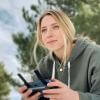














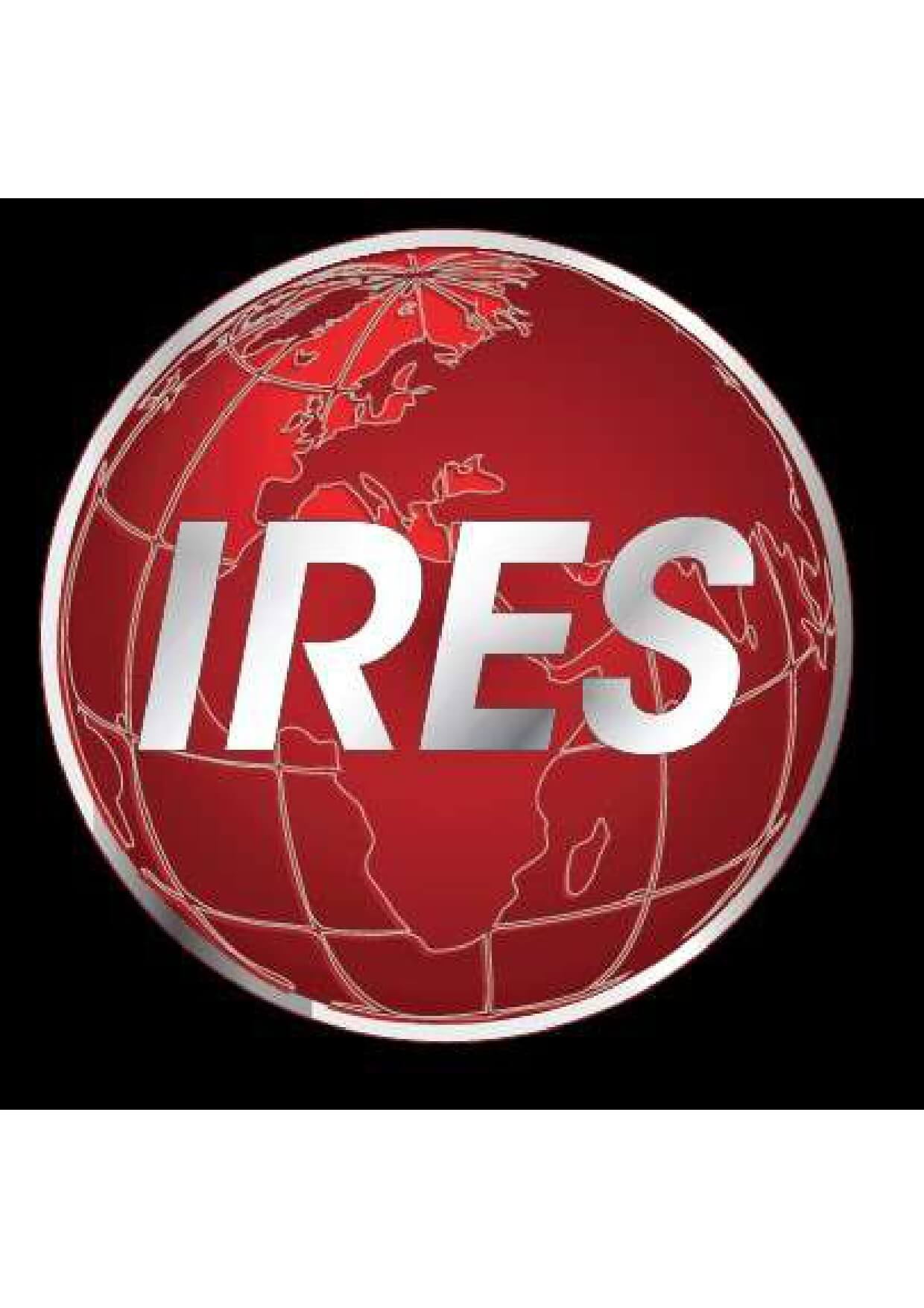


































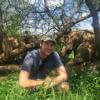











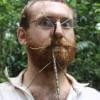
26 January 2024 3:18pm
Hi Krasi! Greetings from Brazil!
That's a cool journey you've started! Congratulations. And I felt like theSearchLife resonates with the work I'm involved round here. In a nutshell, I live at the heart of the largest remaining of Atlantic forest in the planet - one of the most biodiverse biomes that exist. The subregion where I live is named after and bathed by the "Rio Sagrado" (Sacred River), a magnificent water body with a very rich cultural significance to the region (it has served as a safe zone for fleeing slaves). Well, the river and the entire bioregion is currently under the threat of a truly devastating railroad project which, to say the least is planned to cut through over 100 water springs!
In face of that the local community (myself included) has been mobilizing to raise awareness of the issue and hopefully stop this madness (fueled by strong international forces). One of the ways we've been fighting this is through the seeking of the recognition of the sacred river as an entity of legal rights, who can manifest itself in court, against such threats. And to illustrate what this would look like, I've been developing this AI (LLM) powered avatar for the river, which could maybe serve as its human-relatable voice. An existing prototype of such avatar is available here. It has been fine-tuned with over 20 scientific papers on the Sacred River watershed.
And right now myself and other are mobilizing to manifest the conditions/resources to develop a next version of the avatar, which would include remote sensing capacities so the avatar is directly connected to the river and can possibly write full scientific reports on its physical properties (i.e. water quality) and the surrounding biodiversity. In fact, myself and 3 other members of the WildLabs community have just applied to the WildLabs Grant program in order to accomplish that. Hopefully the results are positive.
Finally, it's worth mentioning that our mobilization around providing an expression medium for the river has been multimodal, including the creation of a shortfilm based on theatrical mobilizations we did during a fest dedicated to the river and its surrounding more-than-human communities. You can check that out here:
Let's chat if any of that catches your interest!
Cheers!